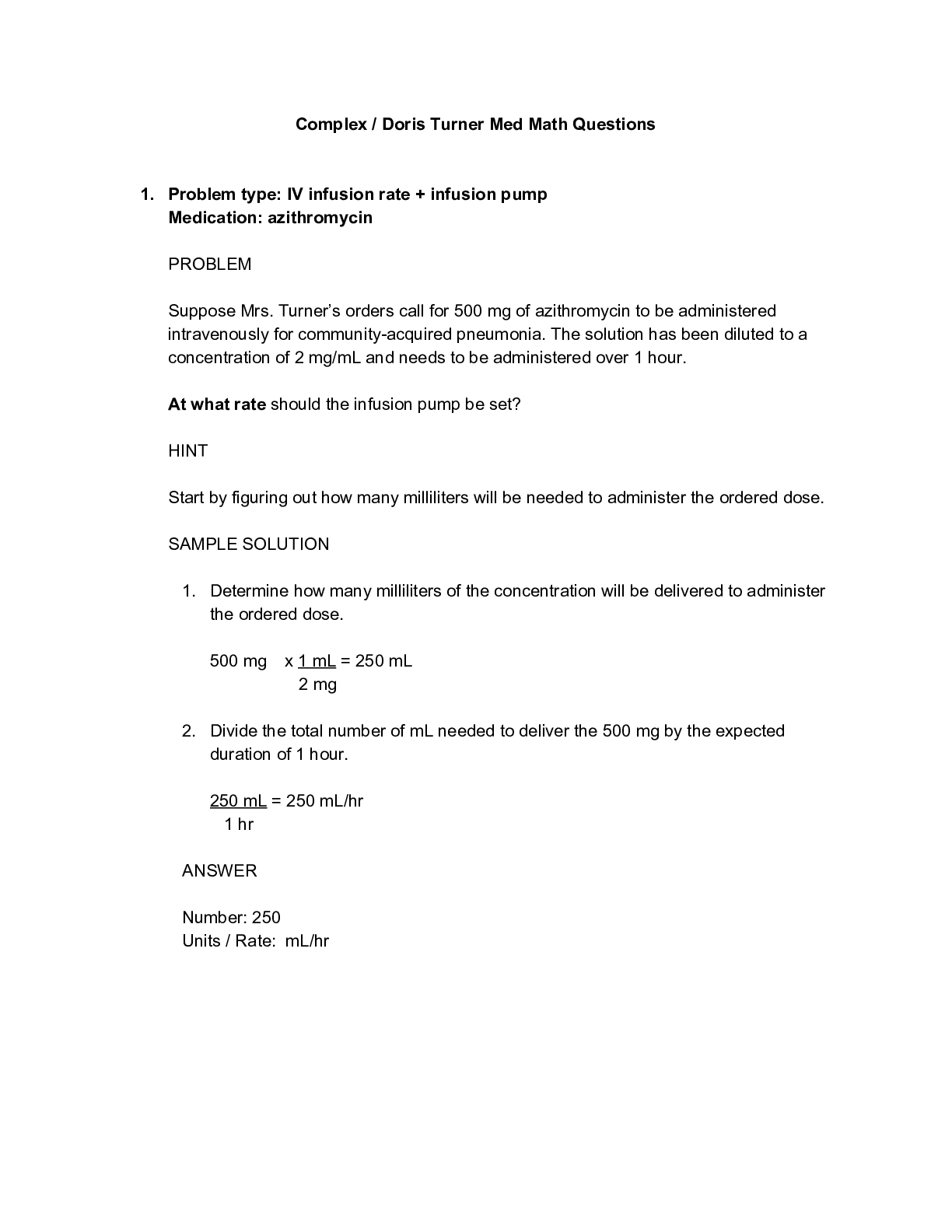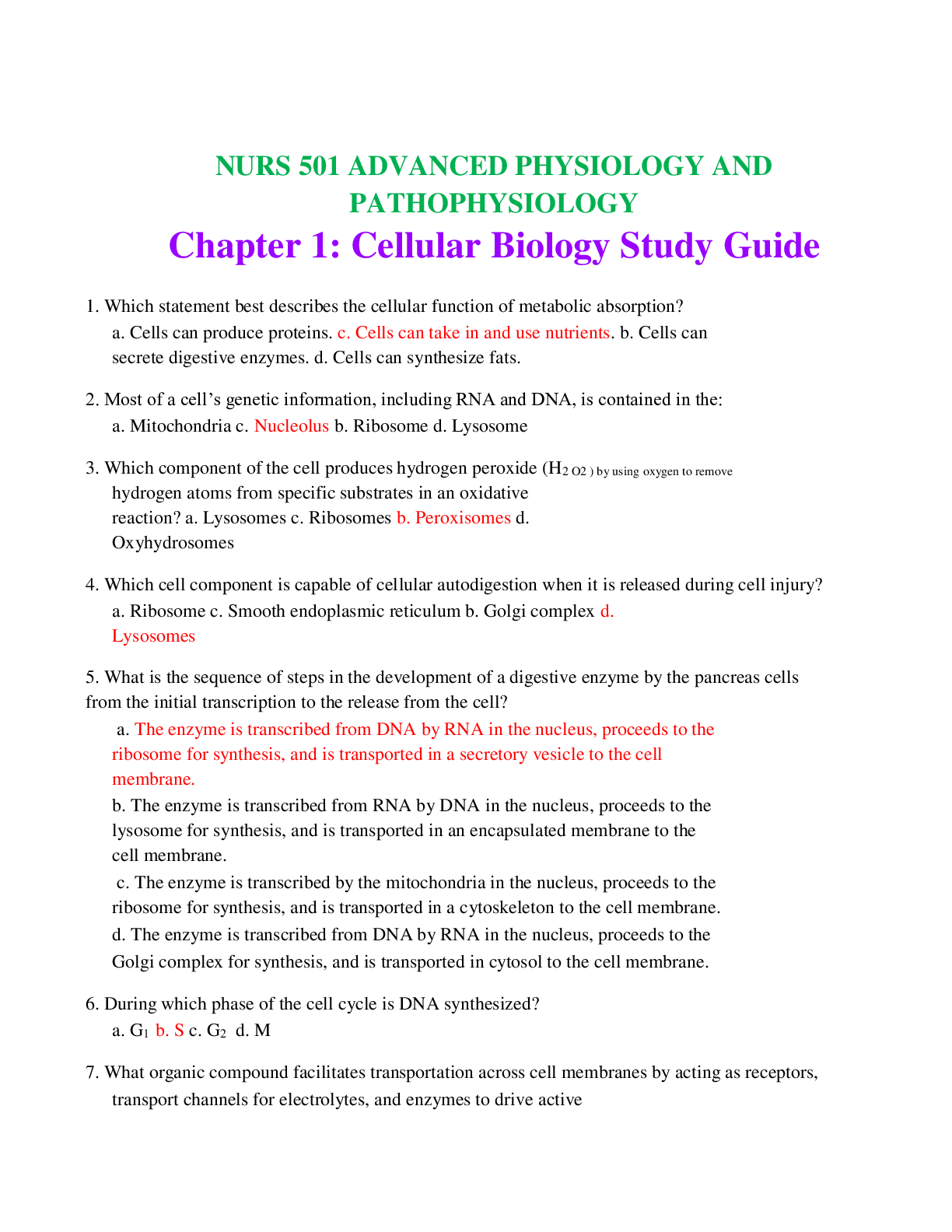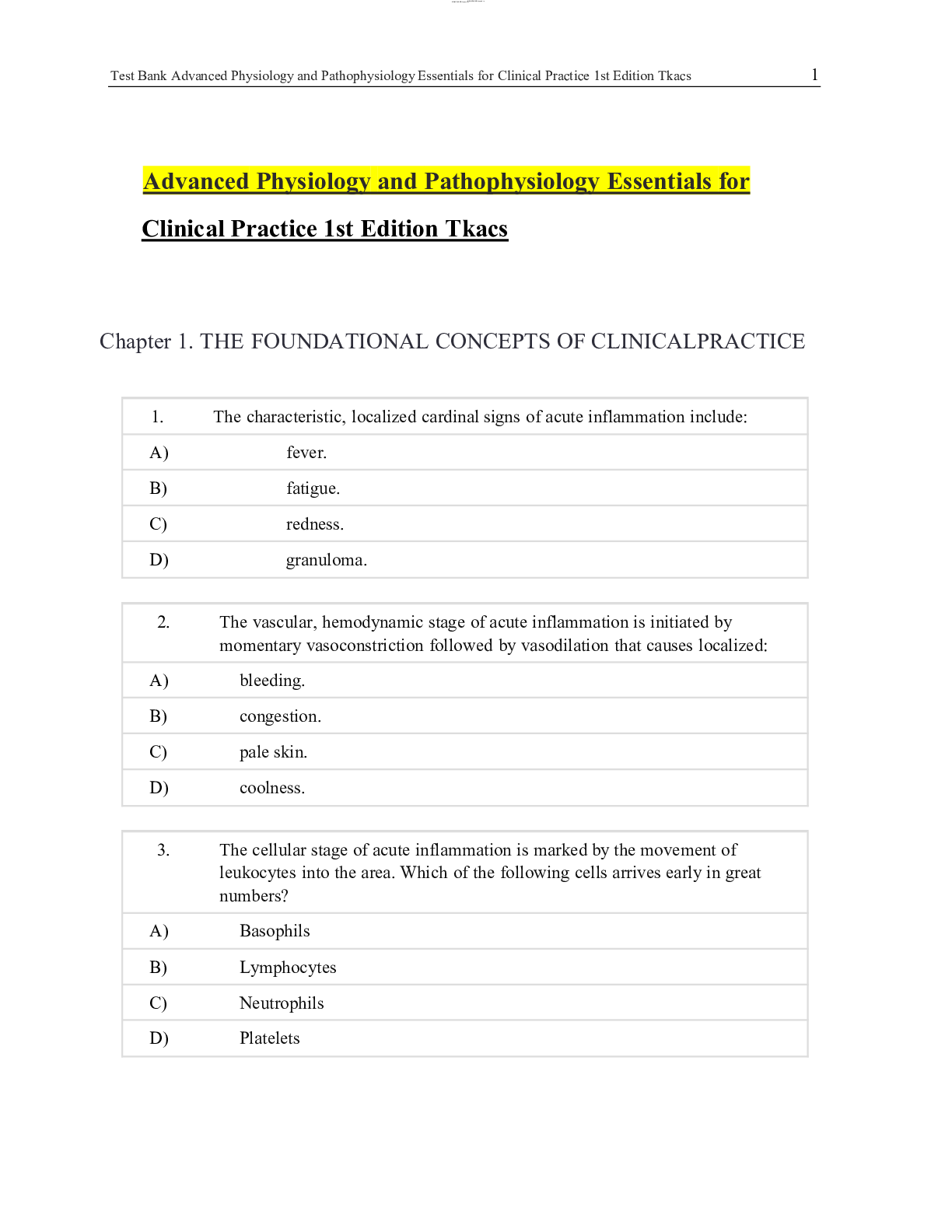*NURSING > QUESTIONS & ANSWERS > NURS501 Advanced Physiology and Pathophysiology Chapter 3 Fluid, Electrolytes and Acid-Base Balance (All)
NURS501 Advanced Physiology and Pathophysiology Chapter 3 Fluid, Electrolytes and Acid-Base Balance Study Guide
Document Content and Description Below
1. Infants are most susceptible to significant losses in total body water because of an infant’s: a. High body surface–to–body size ratio b. Slow metabolic rate c. Kidneys are not mature eno... ugh to counter fluid losses d. Inability to communicate adequately when he or she is thirsty 2. Obesity creates a greater risk for dehydration in people because: a. Adipose cells contain little water because fat is water repelling. b. The metabolic rate of obese adults is slower than the rate of lean adults. c. The rate of urine output of obese adults is higher than the rate of output of lean adults. d. The thirst receptors of the hypothalamus do not function effectively. 3. A patient’s blood gases reveal the following findings: pH, 7.3; bicarbonate (HCO3) 27 mEq/L; carbon dioxide (CO2), 58 mm Hg. What is the interpretation of these gases? a. Respiratory alkalosis c. Respiratory acidosis b. Metabolic acidosis d. Metabolic alkalosis 4. Water movement between the intracellular fluid (ICF) compartment and the extracellular fluid (ECF) compartment is primarily a function of: a. Osmotic forces c. Antidiuretic hormone b. Plasma oncotic pressure d. Hydrostatic forces 5. In addition to osmosis, what force is involved in the movement of water between the plasma and interstitial fluid spaces? a. Oncotic pressure c. Net filtration b. Buffering d. Hydrostatic pressure 6. Venous obstruction is a cause of edema because of an increase in which pressure? a. Capillary hydrostatic c. Capillary oncotic b. Interstitial hydrostatic d. Interstitial oncotic 7. At the arterial end of capillaries, fluid moves from the intravascular space into the interstitial space because the: a. Interstitial hydrostatic pressure is higher than the capillary hydrostatic pressure. b. Capillary hydrostatic pressure is higher than the capillary oncotic pressure. c. Interstitial oncotic pressure is higher than the interstitial hydrostatic pressure. d. Capillary oncotic pressure is lower than the interstitial hydrostatic pressure. 8. Low plasma albumin causes edema as a result of a reduction in which pressure? a. Capillary hydrostatic c. Plasma oncotic b. Interstitial hydrostatic d. Interstitial oncotic 9. Secretion of antidiuretic hormone (ADH) and the perception of thirst are stimulated by a(n): a. Decrease in serum sodium c. Increase in glomerular filtration rate b. Increase in plasma osmolality d. Decrease in osmoreceptor stimulation 10. Thirst activates osmoreceptors by an increase in which blood plasma? a. Antidiuretic hormone c. Hydrostatic pressure b. Aldosterone d. Osmotic pressure [Show More]
Last updated: 2 years ago
Preview 1 out of 6 pages

Buy this document to get the full access instantly
Instant Download Access after purchase
Buy NowInstant download
We Accept:

Reviews( 0 )
$9.00
Can't find what you want? Try our AI powered Search
Document information
Connected school, study & course
About the document
Uploaded On
Oct 22, 2020
Number of pages
6
Written in
Additional information
This document has been written for:
Uploaded
Oct 22, 2020
Downloads
0
Views
100





















